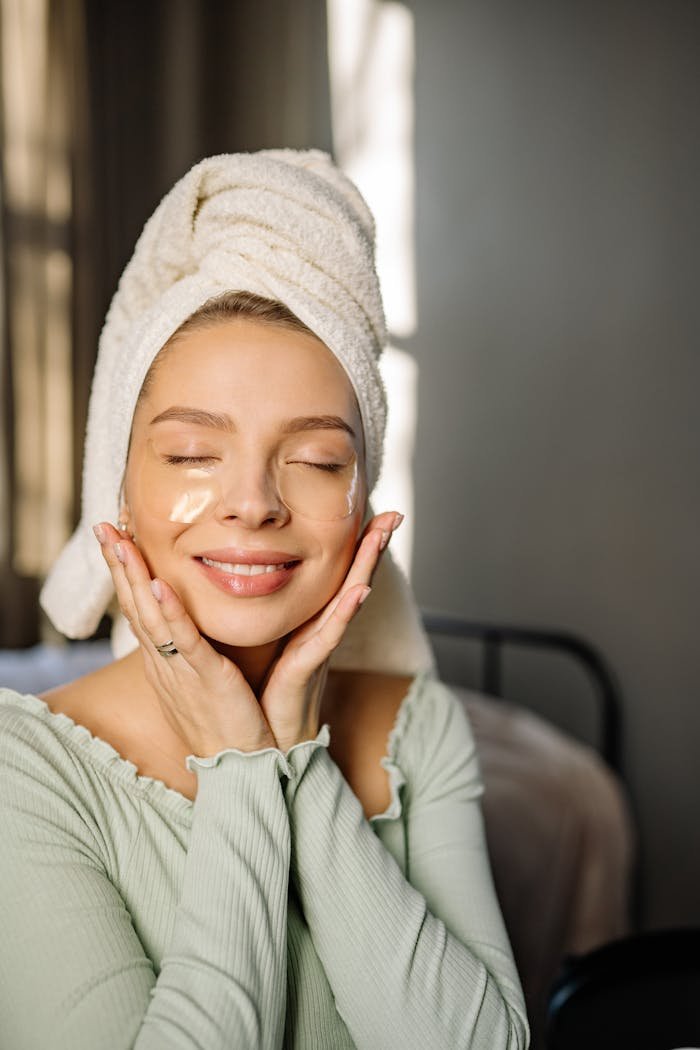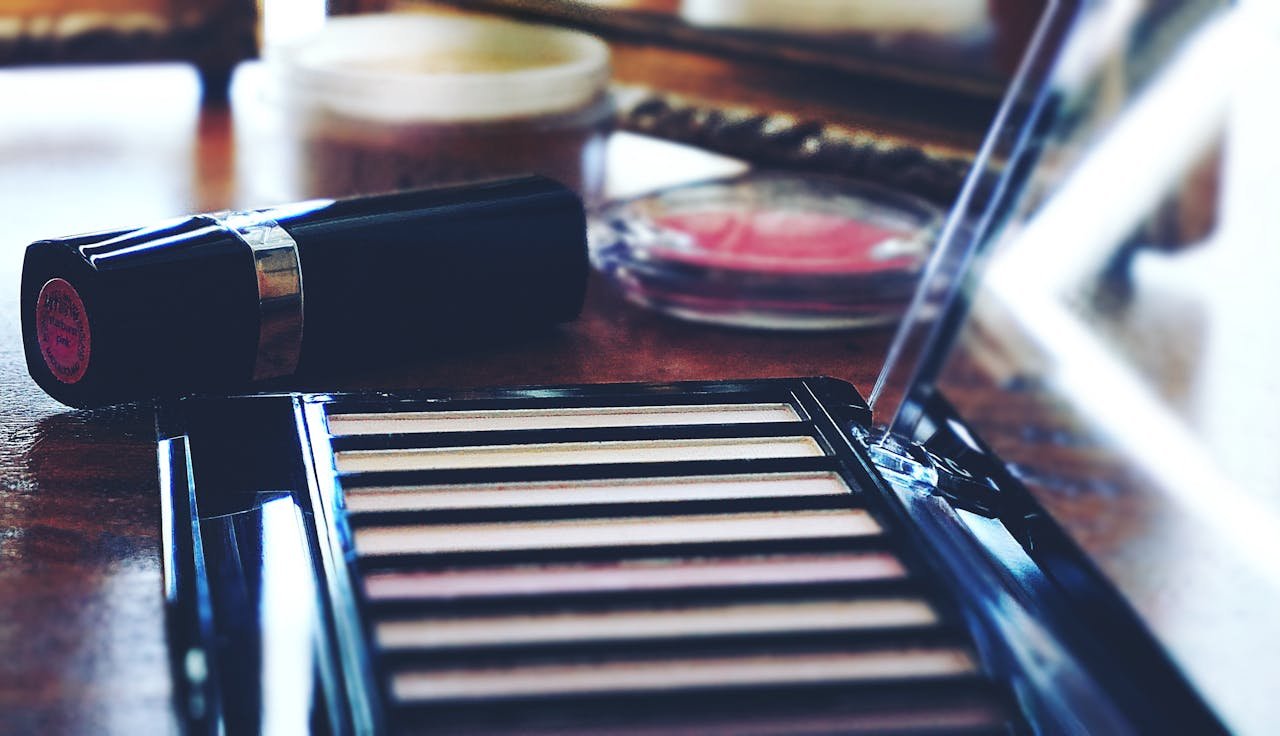Rice flour for skin
Want glowing, flawless skin? Rice flour for skin might be your new secret weapon! This natural ingredient is packed with beauty benefits. It gently exfoliates, brightens the skin, and helps reduce excess oil. Rice flour’s benefits for the skin also include improving texture and fading dark spots. Some even say it offers mild sun protection. But is rice flour good for the face? While it works wonders for many, it may not suit everyone.
Rice paste for face is a simple, affordable skincare solution. Many DIY beauty lovers mix it with honey, milk, or rose water for a nourishing mask. Rice powder benefits for skin include oil control and gentle exfoliation. But don’t forget about the side effects of rice flour on the face! It may cause dryness or irritation, especially for sensitive skin. Always do a patch test first to enjoy the best results!
Is Rice Flour Really Good for Your Skin?
Rice flour for skin is a popular beauty ingredient. It helps to remove dead skin cells and makes the skin look brighter. Many people use it to control oil and reduce dark spots. Rice flour benefits for skin also include gentle exfoliation. But is rice flour good for face for everyone?
Rice paste for face is easy to use in DIY masks. Mixing it with honey, milk, or rose water can make the skin feel smooth. Rice powder benefits for skin include reducing shine and improving skin texture. However, the side effects of rice flour on face include dryness or irritation in some people.
While rice flour for skin has many benefits, not all skin types react the same. Sensitive or dry skin may feel tight or irritated. Always do a patch test before using. To enjoy the best results, use rice flour in moderation and with moisturizing ingredients.
What is rice flour?
Rice flour is a fine powder made by grinding raw or cooked rice. It is commonly used in cooking and baking. Many people also use rice flour for skin because of its gentle exfoliating properties. It is a natural ingredient found in many beauty treatments and homemade face masks.
There are two main types of rice flour: white rice flour and brown rice flour. White rice flour is smoother and more refined, while brown rice flour has more nutrients. Both types are used in skincare, but white rice flour is more popular for face masks.
Rice flour benefits for skin include removing dead skin cells, brightening the complexion, and controlling oil. It is often mixed with other ingredients like honey or milk. Many people use rice paste for face to get a smooth and glowing look.
One of the biggest rice powder benefits for skin is its ability to gently exfoliate. This helps remove dirt and oil, making the skin look fresh. It also has some oil-absorbing properties, which can help people with oily skin.
But is rice flour good for face? While it has many benefits, it may not suit all skin types. Some people may experience dryness or irritation. This is why a patch test is important before applying it to the face.
Despite its benefits, there are some side effects of rice flour on face. If used too often, it can make the skin dry. People with sensitive skin should mix it with soothing ingredients like yogurt or aloe vera to avoid irritation.
How rice flour (supposedly) helps skin

Rice flour is believed to help the skin in many ways. It acts as a natural exfoliant, gently removing dead skin cells and dirt. This makes the skin look fresh and smooth. Many people use rice flour for skin to brighten their complexion and reduce dark spots over time.
Rice powder benefits for skin include oil control. It absorbs excess oil, making it useful for people with oily skin. Some also say that rice paste for face can tighten pores and reduce acne. Mixing it with honey or rose water can help keep the skin soft and hydrated.
Many believe rice flour benefits for skin by protecting it from sun damage. Some say it has natural sun-blocking properties, though it is not a replacement for sunscreen. But is rice flour good for face? It may work for some, but results vary for different skin types.
Sun protection
Rice flour is sometimes considered a natural remedy for sun protection. Some believe it can help shield the skin from harmful UV rays. However, it does not provide enough protection on its own.
Many homemade face masks include rice flour as an ingredient for sun care. Some people mix it with yogurt or rose water and apply it before going outside.
While some claim that rice flour can act as a natural sunscreen, there is no strong scientific evidence to prove this. It should never replace regular sunscreen.
Some people use rice paste for face after sun exposure. They believe it can help cool the skin and reduce the effects of sun damage.
Rice flour is often included in DIY skincare routines for sun protection. However, dermatologists recommend using proper sunblock with SPF for real protection.
Applying rice powder on the face may feel soothing after sun exposure. But it does not block UV rays like commercial sunscreens.
Many people prefer natural remedies, but rice flour alone is not enough to prevent sunburn or long-term damage from the sun.
Experts suggest using broad-spectrum sunscreen along with any natural skincare products. This ensures the skin stays safe from harmful rays.
Rice flour is sometimes used for sun protection, but it should never be a replacement for sunscreen. Always use SPF to protect your skin properly.
Acne and hyperpigmentation treatment
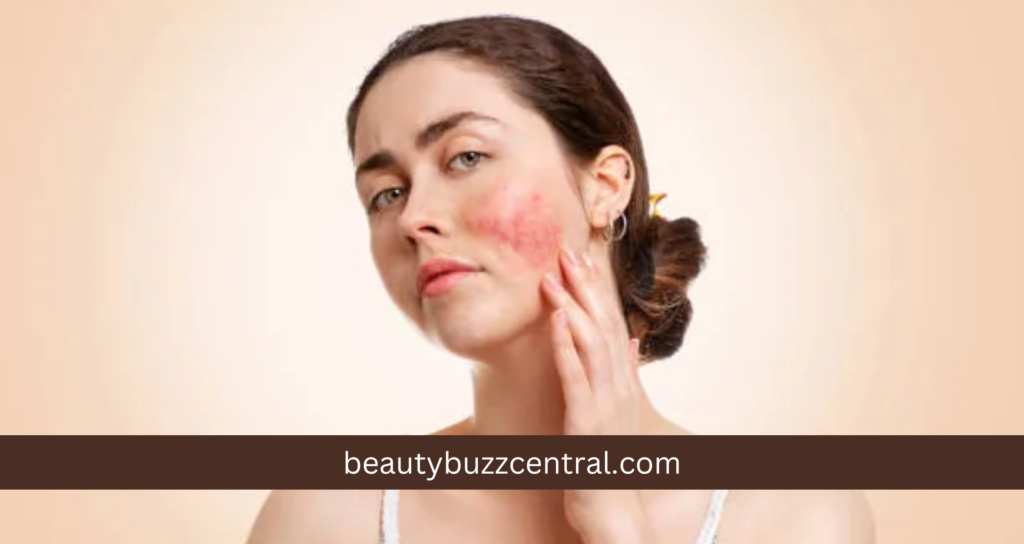
Acne and hyperpigmentation are common skin concerns, and many people look for natural remedies to treat them. Rice flour is often used in DIY skincare because of its mild exfoliating properties. Some believe it helps remove dead skin cells and unclog pores, which may reduce acne breakouts over time.
Many face masks use rice paste for face to target acne. It is often mixed with honey, yogurt, or rose water for added benefits. These ingredients can help soothe the skin while rice flour gently scrubs away impurities. However, results may vary, and it may not work for severe acne.
Hyperpigmentation happens when dark spots or uneven skin tone develop. Some people use rice flour to brighten their skin. They believe it may lighten dark patches and give a more even complexion. Regular exfoliation with rice powder benefits for skin by improving its texture.
Rice flour is also believed to help with acne scars. Some DIY remedies suggest using it with milk or aloe vera to fade marks over time. However, it works slowly and may not provide instant results like professional treatments.
Despite its potential benefits, rice flour may not suit all skin types. People with sensitive or dry skin should be cautious, as it can cause irritation. Doing a patch test before applying rice paste for face is always a good idea.
For better acne and hyperpigmentation treatment, combining rice flour with a good skincare routine is important. Using sunscreen, hydrating the skin, and following a dermatologist’s advice can give more effective and long-lasting results.
Wound healing
Rice flour is sometimes used in home remedies for wound healing. It is believed to help dry out minor cuts and scrapes while keeping the skin clean. Some people mix it with honey or aloe vera for extra soothing effects. However, it is not a medical treatment and may not work for deep wounds.
Oil absorption
Rice flour is known for its excellent oil-absorbing properties, making it a popular choice for people with oily skin. Its fine texture helps soak up excess sebum without stripping the skin’s natural moisture. Many use rice flour-based masks or scrubs to keep their skin fresh and less greasy throughout the day.
Using rice flour for oil absorption can also help prevent clogged pores and breakouts. When applied as a face mask or mixed with natural ingredients like yogurt or rose water, it controls shine while providing a smooth, matte finish. This makes it a great alternative to chemical-based oil-control products.
For those struggling with an oily T-zone, rice flour works well as a natural setting powder.
Why rice flour might not work
Rice flour may not work for everyone, as skin types react differently. While it absorbs oil, it can also cause dryness, especially for those with sensitive or dry skin. Overuse may strip the skin’s natural moisture, leading to irritation, redness, or flaky patches. A patch test is always recommended before use.
Some people may experience clogged pores from rice flour if it’s not rinsed off properly. Its fine particles can settle into pores, potentially leading to breakouts. Those prone to acne should be cautious and ensure they cleanse their skin thoroughly after using rice flour-based masks or scrubs.
Rice flour may not provide instant or dramatic results. Unlike chemical-based skincare products, natural remedies take time to show effects.
Not all rice flour is created equal. Some store-bought versions may contain additives or preservatives that can irritate the skin. Using pure, organic rice flour is essential to avoid unwanted side effects.
Environmental factors also play a role. If your skin is already exposed to harsh weather conditions, like extreme heat or cold, rice flour may not be the best choice. It could further dry out or irritate the skin, making it feel rough instead of smooth and refreshed.
How to use it effectively
To use rice flour effectively, mix it with ingredients that suit your skin type. For oily skin, combine it with rose water or lemon juice. Dry skin benefits from mixing it with honey or milk. Apply a thin layer, leave it for 10-15 minutes, then rinse gently. Always moisturize afterward.
DIY rice flour mask
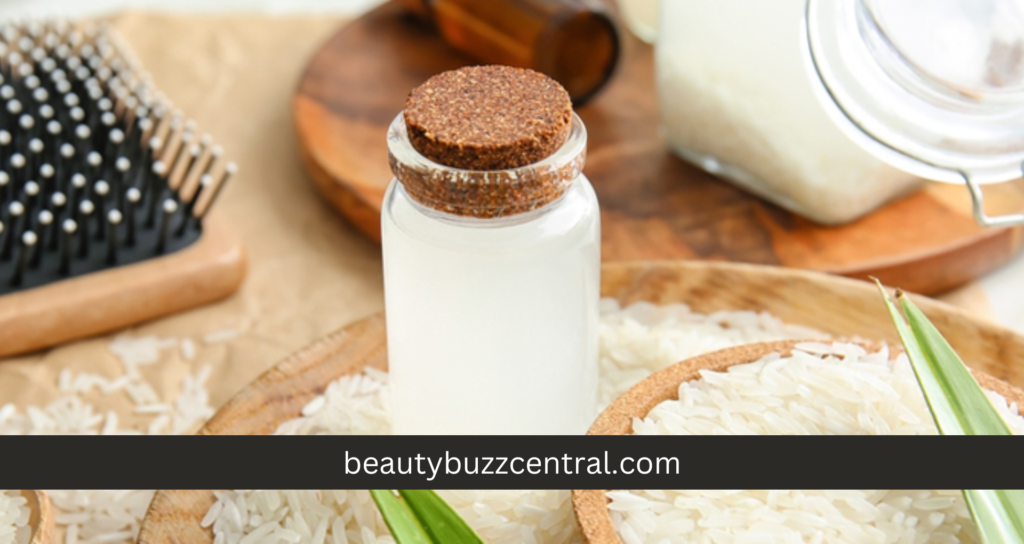
Rice flour masks are a natural way to care for your skin. They help remove dead cells, absorb excess oil, and leave your skin feeling smooth. Many people love using them because they are easy to make at home and don’t contain harsh chemicals.
You can mix rice flour with different ingredients to create masks for various skin concerns. Adding honey or yogurt can make it more nourishing, while lemon juice can help brighten the skin. These masks are simple yet effective for improving your skin’s texture.
Applying a rice flour mask a few times a week can refresh your skin. It helps cleanse impurities and gives a natural glow. Just mix the ingredients, apply the mask evenly, leave it for a few minutes, and rinse with water.
You can try the following rice flour for skin remedy:
- Mix rice flour with honey and lemon juice for a brightening effect. Apply for 15 minutes, then rinse.
- Combine rice flour with yogurt and a pinch of turmeric for acne control. Leave it on for 10-15 minutes and wash off.
- Mix rice flour with milk and rose water for a hydrating mask. Apply and rinse after 15 minutes.
- Blend rice flour with aloe vera gel to control excess oil. Leave it on for 10 minutes, then wash off.
- Combine rice flour with ground oats and a little water for gentle exfoliation. Massage lightly and rinse.
Use these masks two to three times a week for the best results. Always do a patch test before applying to avoid any irritation.
Rice Flour and Aloe Vera Soothing Mask
- Mix 2 tablespoons of rice flour with 1 tablespoon of fresh aloe vera gel.
- Stir well until you get a smooth, spreadable paste.
- Apply a thin layer to your face, avoiding the eyes and lips.
- Let it sit for 15–20 minutes to allow the skin to absorb its soothing properties.
- Rinse off with cool water and gently pat dry.
- Use twice a week to calm irritated or sensitive skin.
Rice Flour and Yogurt Brightening Scrub
- Take 2 tablespoons of rice flour and mix it with 1 tablespoon of plain yogurt.
- Blend until it forms a thick paste with a smooth texture.
- Gently massage onto damp skin using circular motions for 2–3 minutes.
- Leave it on for 10 minutes to let the lactic acid work.
- Rinse with lukewarm water and pat dry.
- Use once or twice a week for a brighter and smoother complexion.
Rice Flour vs. Other Natural Skincare Ingredients
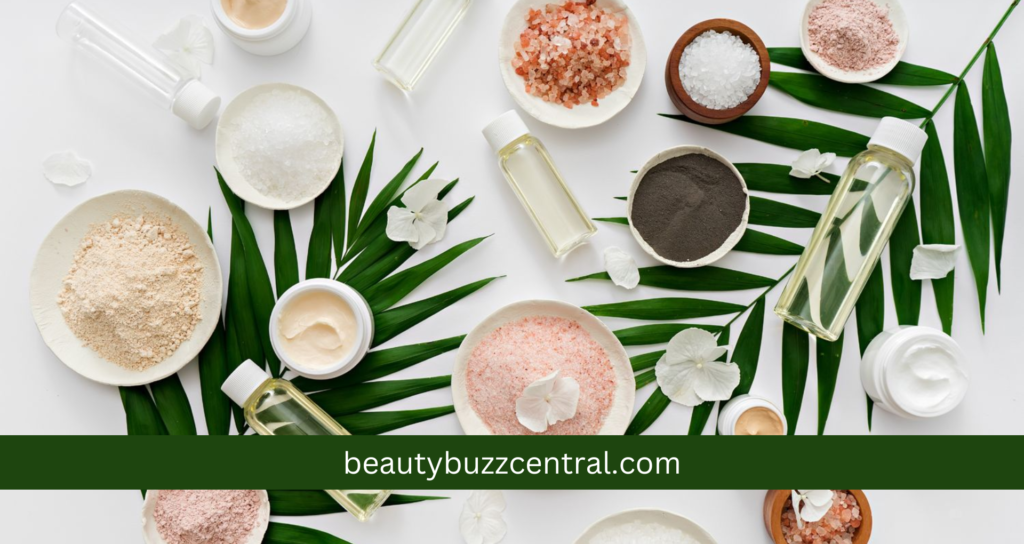
Rice flour for skin is a popular choice, but how does it compare to other natural ingredients? Many people use oatmeal, honey, and turmeric for skincare. Unlike rice flour, oatmeal is deeply hydrating, while turmeric has anti-inflammatory properties that help with acne and redness.
Some prefer chemical peels with AHAs (Alpha Hydroxy Acids) for exfoliation, but rice flour works as a gentle natural exfoliant. It contains phytic acid, which helps brighten skin without causing irritation like stronger chemical treatments. This makes it suitable for sensitive skin.
When it comes to UV protection, rice flour contains para-aminobenzoic acid (PABA), but aloe vera and green tea offer extra antioxidant support. Skincare research suggests combining these ingredients for better sun defense.
Rice flour helps with oil absorption, making it great for oily skin. However, ingredients like bentonite clay absorb excess oil more effectively. Dermatologists often recommend mixing both for balanced results.
In the cosmetic industry, many brands use rice bran and rice starch in their products. However, compared to vitamins C and E serums, rice flour may take longer to show noticeable results. It’s best used as part of a skincare routine rather than a quick fix.
Best Skin Types for Using Rice Flour
- Rice flour for skin absorbs excess oil and controls shine, making it ideal for those with greasy skin.
- Helps balance oily and dry areas by providing mild exfoliation and gentle oil control.
- Contains anti-inflammatory properties that may soothe breakouts and reduce redness.
- Works as a natural exfoliant, but a patch test is recommended to avoid irritation.
- The brightening effects of rice flour help improve skin tone and texture over time.
- Contains antioxidants that may help fight photodamage and reduce fine lines.
- May lighten melasma, dark spots, and pigmentation when used consistently
Can Rice Flour Cause Skin Irritation?
Rice flour for the skin is usually gentle, but it may not suit everyone. Some people experience skin irritation, especially if they have sensitive skin. Its exfoliating properties can sometimes lead to redness, itching, or dryness. A patch test is always a good idea before applying it to the face.
Overuse of rice flour for the skin may strip away natural oils, causing dryness and discomfort. Those with dry skin might notice tightness or flaky patches after using it. If irritation occurs, reducing usage or mixing it with hydrating ingredients like honey or yogurt can help.
Some individuals may react to compounds in rice flour, such as phytic acid, which can be too strong for certain skin types. People prone to allergic reactions should be cautious and avoid using it too frequently to prevent sensitivity.
If you experience burning, redness, or breakouts, rice flour for the skin might not be the best choice. Dermatologists suggest stopping use if irritation persists. Choosing a milder natural exfoliant or consulting a skincare expert can help find a better alternative.
FAQ’s
Can we apply rice flour on the face daily?
Using rice flour for skin daily may cause dryness. It’s best to use it 2-3 times a week to avoid irritation and keep skin balanced.
What should I mix with rice flour for skin whitening?
Mix rice flour for skin with honey, lemon juice, or milk. These ingredients help brighten skin, reduce dark spots, and improve overall complexion.
How to use rice for skin whitening?
Make a paste using rice flour for skin with water or rose water. Apply it, leave for 15 minutes, then rinse for a brighter look.
Does rice flour remove pigmentation?
Yes, rice flour for skin may help lighten pigmentation over time. Regular use can reduce dark spots and even out skin tone naturally.
Can rice flour remove tan?
Yes, rice flour for skin can help fade tan. It gently exfoliates, removes dead skin cells, and brightens the skin for a more even tone.
Conclusion:
Rice flour for the skin is a popular natural ingredient. It helps with exfoliation, oil control, and brightening. Many people use rice paste for the face to improve skin texture. Rice flour benefits for skin include reducing dark spots and giving a smooth feel. But is rice flour good for the face? It depends on skin type. While rice powder benefits for skin are great, it may not suit everyone.
There are also side effects of rice flour on the face. It can cause dryness, irritation, or allergies, especially for sensitive skin. A patch test is always a good idea. Using rice flour for skin correctly gives the best results. Mixing it with honey, milk, or rose water can improve its effects. Rice paste for the face is easy to make and use. With the right method, it can be a great addition to skincare

